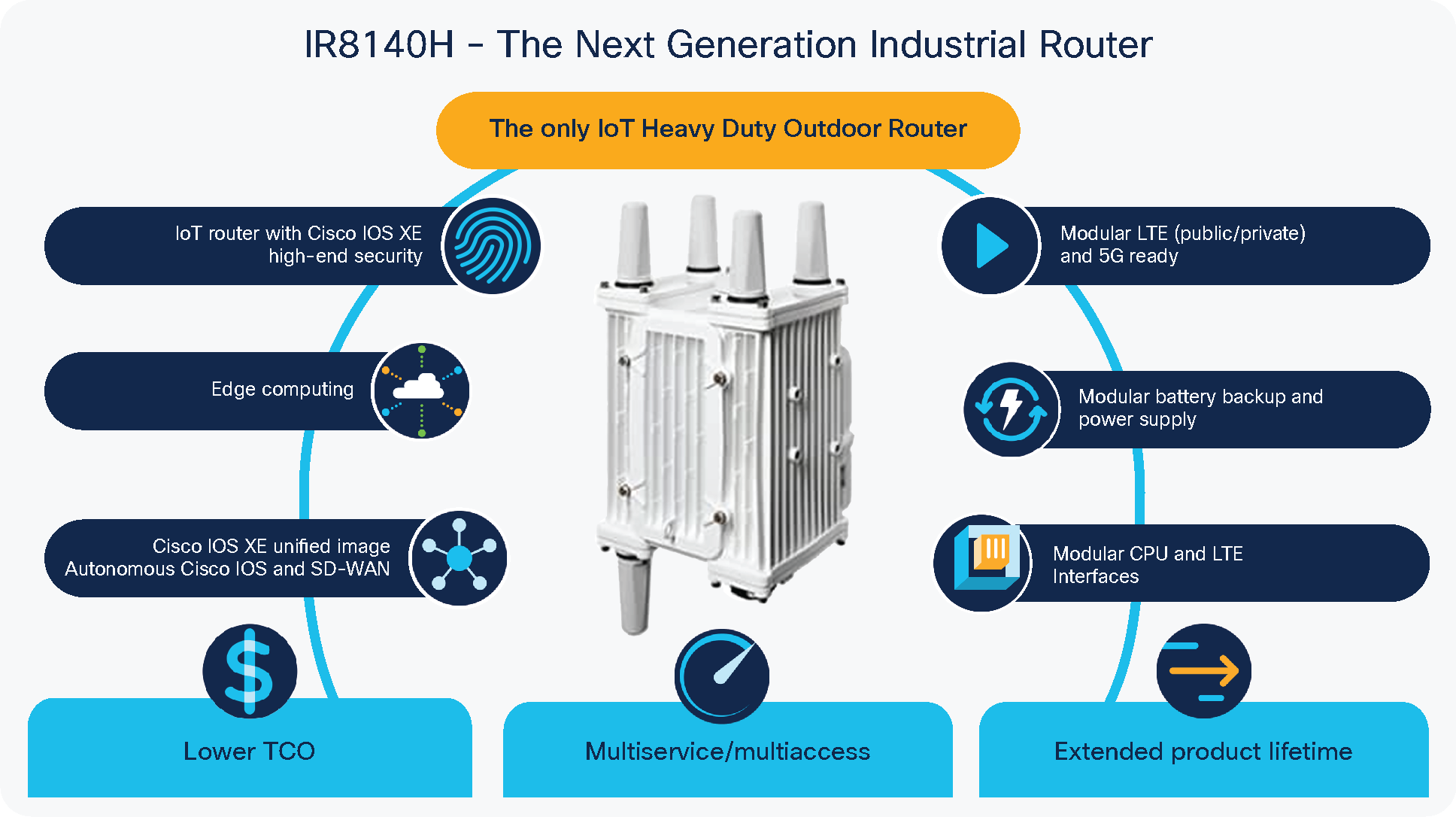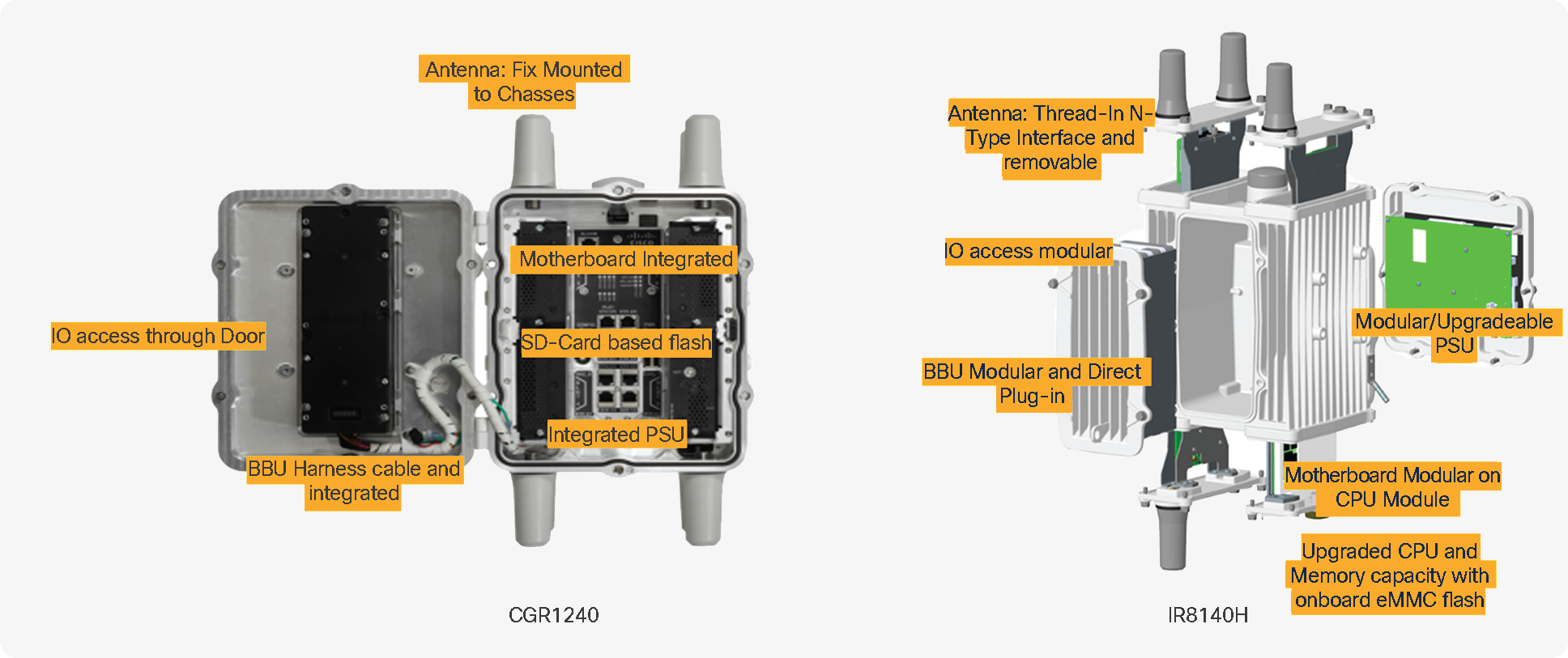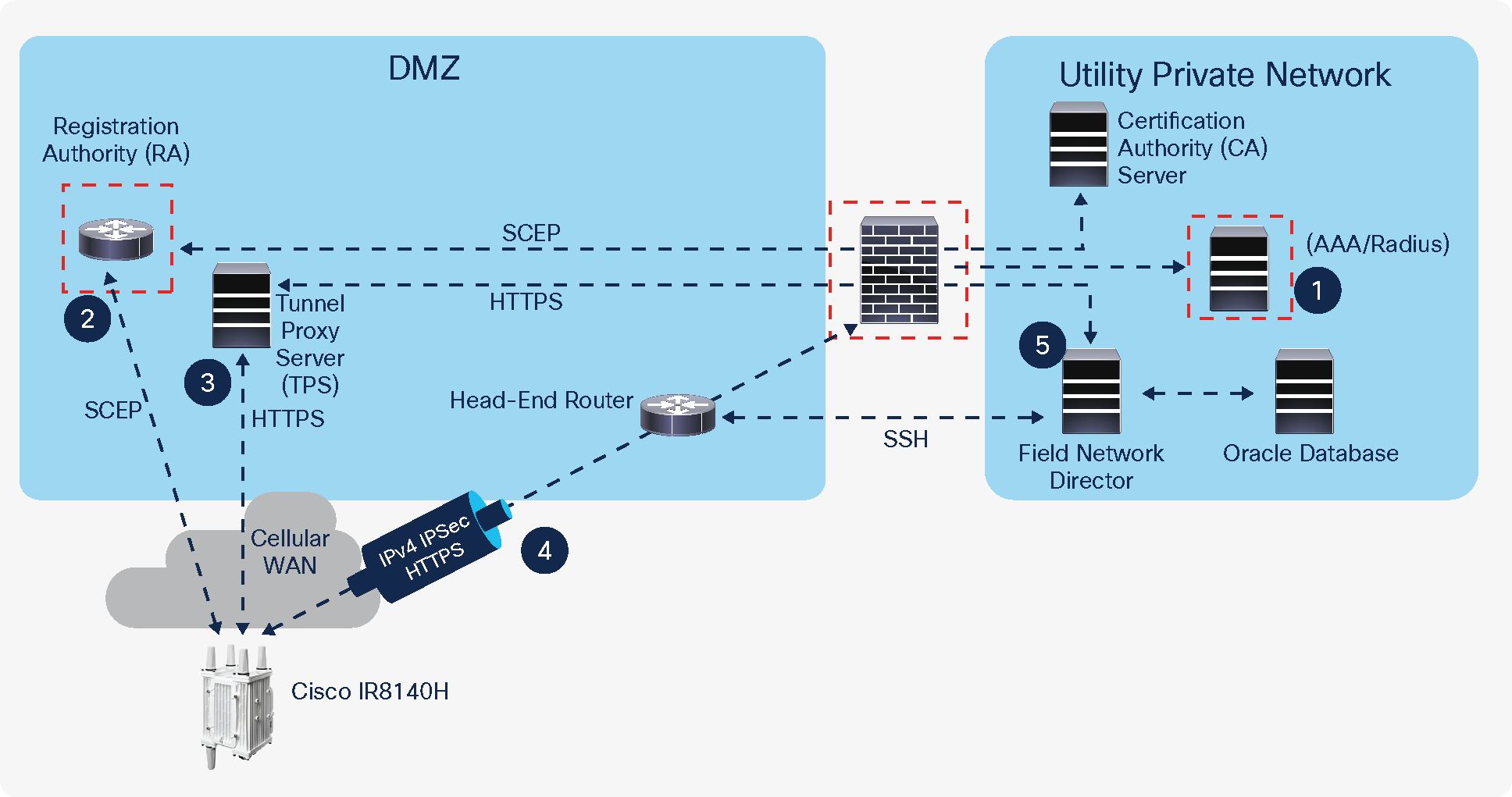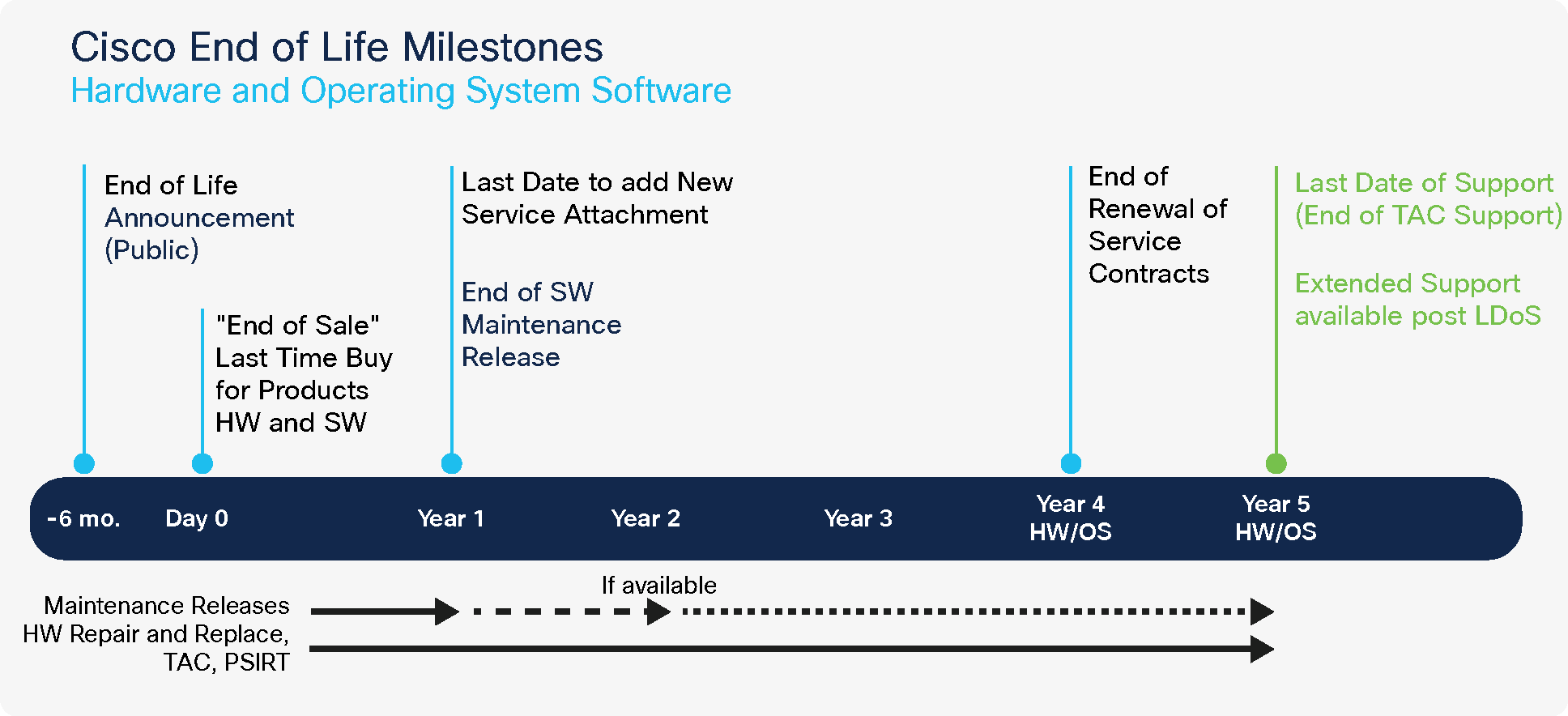Migrating to the Next Generation of Industrial IP67 Outdoor Routers, the Cisco Catalyst IR8140H White Paper
Available Languages
Bias-Free Language
The documentation set for this product strives to use bias-free language. For the purposes of this documentation set, bias-free is defined as language that does not imply discrimination based on age, disability, gender, racial identity, ethnic identity, sexual orientation, socioeconomic status, and intersectionality. Exceptions may be present in the documentation due to language that is hardcoded in the user interfaces of the product software, language used based on RFP documentation, or language that is used by a referenced third-party product. Learn more about how Cisco is using Inclusive Language.
The next generation of IP67 outdoor routers — how do I migrate from my CGR 1000?
Utilities all over the world are undergoing significant transitions in their grids, from transmission to consumption and rising security threats. Regulatory mandates are influencing initiatives related to smart metering, grid reliability, and integration of solar and wind farms into the distribution grid. This imposes a unique set of challenges for utilities to build easily serviceable networks that also scale across millions of smart meter endpoints.
The Cisco Catalyst IR8140H Heavy Duty Router has been specifically designed and developed to meet these challenges. Using design principles and lessons learned from the Cisco 1000 Series Connected Grid Routers (CGR 1000 Series), the IR8140H router offers the following benefits:
● Completely modular: A single form factor provides modular LTE for different regions, data throughputs, and cellular bands. A modular battery backup and Power Supply Unit (PSU) enables longevity.
● Dual active LTE connectivity: Concurrent connectivity to two networks.
● Wi-SUN mesh and Cisco Resilient Mesh connectivity: Acts as an endpoint gateway for thousands of connected Wi-SUN nodes.
● Edge computing: Provides an open, extensible environment for hosting the OS and applications at the network edge.
● mSATA and onboard flash storage module: With an expansion module, the IR8140H enables local storage of application data.
● SD-WAN: Enables simplicity of orchestration, diversity in WAN connectivity, and best-in-class experience with an end-to-end WAN policy.
In this white paper, we focus on how to prepare your head-end network to migrate your existing fleet of CGR 1000 Series routers to the IR8140H and the options we provide to continue support for the existing CGR 1000 Series routers in your fleet.

Platform highlights
The key differences between the IR8140H and the CGR 1000
The IR8140H was designed based on direct feedback from utilities and how they perceive ease of use in the context of Advanced Metering Infrastructure (AMI) and Distribution Automation (DA) networks. The chassis is fully modular, and all internal wiring complexity is hidden. The CPU has been upgraded to serve the next generation of large-scale Cisco Resilient Mesh and Wi-SUN mesh networks. The SD-Card was replaced with more reliable and resilient onboard eMMC storage.
Other key differences from the CGR 1000 Series include:
● Modularity: Each I/O port (LTE, CPU, WPAN) and the PSU are removable and serviceable without any wiring in the way. Battery backup units (BBUs) are removable as well
● Serviceability: Can be serviced on the pole-top without pulling it off the mounting bracket
● 5G + Wi-SUN: Forward-looking, next-generation connectivity for WAN and Cisco Resilient Mesh connectivity for RF mesh 6LoWPAN networks for AMI and DA networks
● SD-WAN: Class-leading control plane and routing policy handoff to Cisco’s vManage solution
The interface numbering is a key difference between the two routers. This needs to be kept in mind when planning the Cisco Field Network Director (FND) configuration templates.
Table 1. Comparing the CGR 1000 Series and IR8140H interfaces
| Connected Grid Module type |
CGR 1000 Series interface |
IR8140H interface |
| RJ-45 (WAN) |
Gigabit Ethernet 2/1 |
Gigabit Ethernet 0/0/0 |
| WPAN |
WPAN 4/1 |
WPAN 0/1/0 |
| Cellular/LTE (WAN) |
Cellular 3/1 |
Cellular 0/2/0 |
| mSATA SSD/IoX |
– |
Virtual port group0 |
The figure below shows the key hardware differences between the routers.

Comparing the CGR 1000 Series and IR8140H hardware
Zero-touch deployment guidelines for migrating from the CGR 1000 Series to the IR8140H
Zero-Touch Deployment (ZTD) brings the advantages of zero-touch provisioning, requiring no work from the operations team other than the one-time task of creating configuration templates in FND.

ZTD workflow
ZTD allows the secure enrollment of tens of thousands of Internet-of-Things (IoT) gateways and millions of endpoints and is achieved through the intricate selection and configuration of the devices shown in the figure above. The IR8140H deployment will entail a few changes, which are highlighted in the red boxes and detailed in the steps below. After the prerequisites are met, there are five essential steps.
Install the versions below to prepare your devices:
Field Network Director version: 4.8 https://software.cisco.com/download/home/286287993/type/286320247/release/4.8.0?i=!pp
Cisco IOS® XE version: 17.7.1 (select the image that matches the PID of your router; for example, the Power over Ethernet (PoE) enabled version is IR8140H-P-K9 https://software.cisco.com/download/home/286326647/type/282046477/release/Cupertino-17.7.1
Prepare the network operating system (NOS) file for Field Network Director 4.8. Note that the only difference is that the Device Type field is now ‘ir8100’ instead of ‘cgr1000.’ Other headers remain unchanged. This change also applies to any custom user-property files being used in the Field Network Director.
Table 2. Preparing for the IR8140H
| Step |
How it works today |
How do I prepare for the IR8140H? |
| 1. Authorize |
Add the router to the AAA and NPS to authorize the device before it is allowed on the network to be provisioned by FND. |
The router PID+SN will need to be updated in the NPS policy list in your AAA/NPS server. |
| 2 .Enroll router with PKI |
Enroll the router, in this case the IR8140H, with the PKI certificate authority, either public or private. |
The IR8140H uses a 2099 Cisco SUDI for identity and pre-enrollment. The RA version needs to support Cisco IOS XE 17.4.1 or greater to be compatible to support both the 2029 and 2099 SUDI. |
| 3.Encrypt WAN |
Provision a secure IPsec tunnel layered over the WAN via FND templates. |
Note the interface numbering in Table 1 when planning the templates. |
| 4. Configure |
Configure the router interfaces for the use-case-specific scenario – in this case the WPAN (Wi-SUN or Cisco Resilient Mesh). |
Note the interface numbering in Table 1 when planning the templates. Other notable commands that are different in the FND template: <#if far.hasActiveBattery()> do request platform hardware battery charge-discharge enable </#if> |
| 5. Monitor |
Router will send periodic data and SNMP traps/events to the FND. |
|
Key customer benefits of migrating to IR8140H
The Cisco IR8140H is the “Swiss army knife” of choice for utilities and customers transitioning from the CGR 1000 Series while investing in a future-ready solution. It helps protect customers’ investments in their IoT deployments with the following competitive advantages:
● A modular platform designed to reduce maintenance costs and eliminate truck rolls
● An IP67-rated ruggedized, industrial-grade platform suitable for deployment under extreme conditions
● The capability to add and upgrade expansion modules to keep up with newer technologies such as 5G and Wi-SUN as they get rolled out
● Simplified inventory and image management through FND and local Web-UI
● Secures all underlying communication between the platform and the applications using Cisco IOS XE VPN technologies such as Flex-VPN
● Backed by Cisco’s world-class partner ecosystem and support
Table 3. Key ordering PID(s) for Wi-SUN, AMI deployments
| Hardware |
Description |
| IR8140H-P-K9 |
Cisco IR8140H industrial IP67 router – PoE-enabled version |
| IR8140H-K9 |
Cisco IR8140H industrial IP67 router – non-PoE version |
| IRMH-WPAN-NA |
WPAN for Wi-SUN and Cisco Resilient Mesh endpoint support |
| SL-8100-NA |
License required for WPAN / Wi-SUN |
Continuing support for the CGR 1000 Series
The CGR 1000 Series will still have Technical Assistance Center (TAC) support past its end-of-life announcement.
The timeline below shows support milestones past the end-of-life announcement of any Cisco device, which includes the CGR 1000 Series. For the CGR end-of-life announcement, visit https://www.cisco.com/c/en/us/products/collateral/routers/1000-series-connected-grid-routers/announce-1000-series-grid-routers-eol.html

Cisco end-of-life milestones
● Cisco industrial routers and gateways